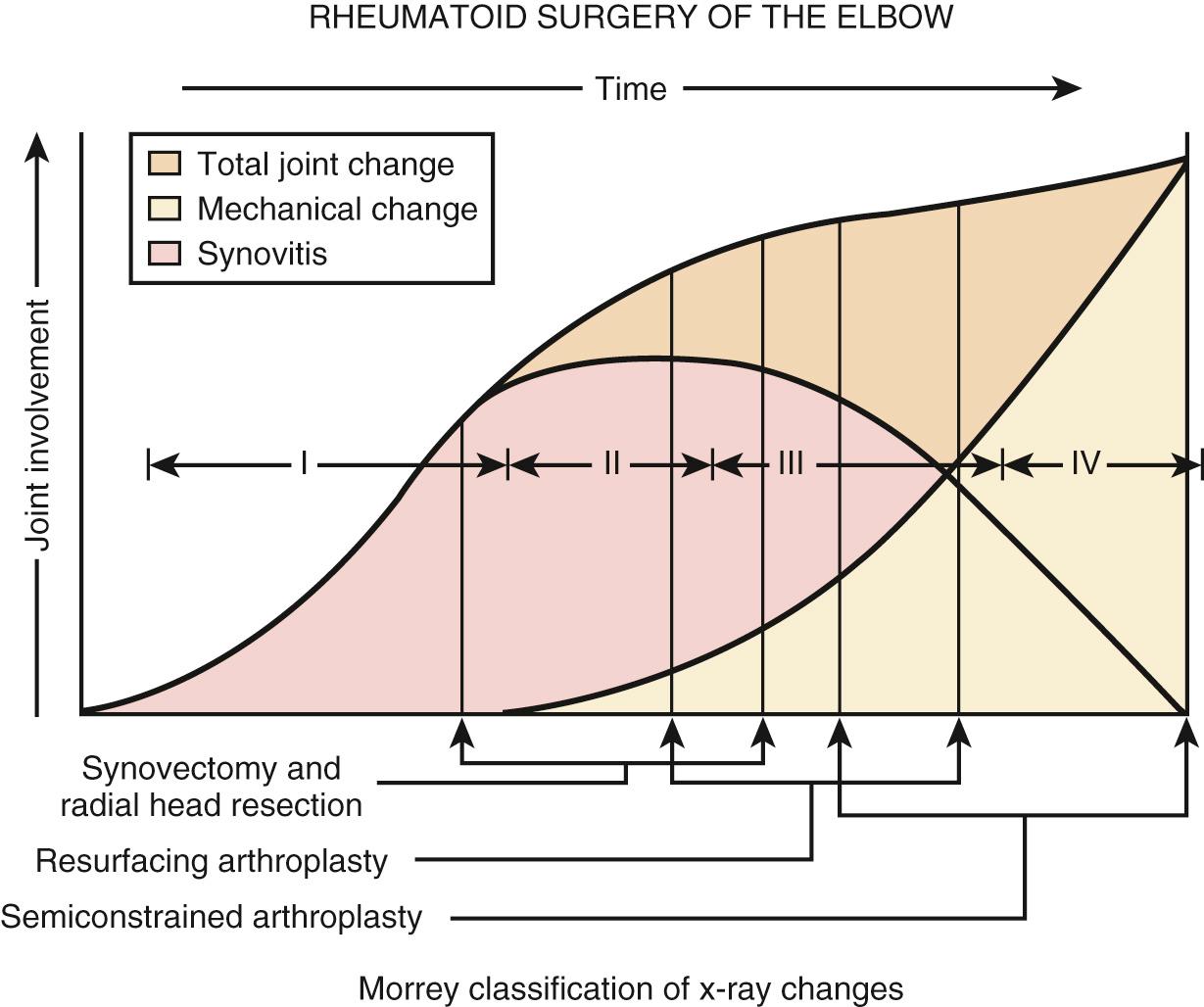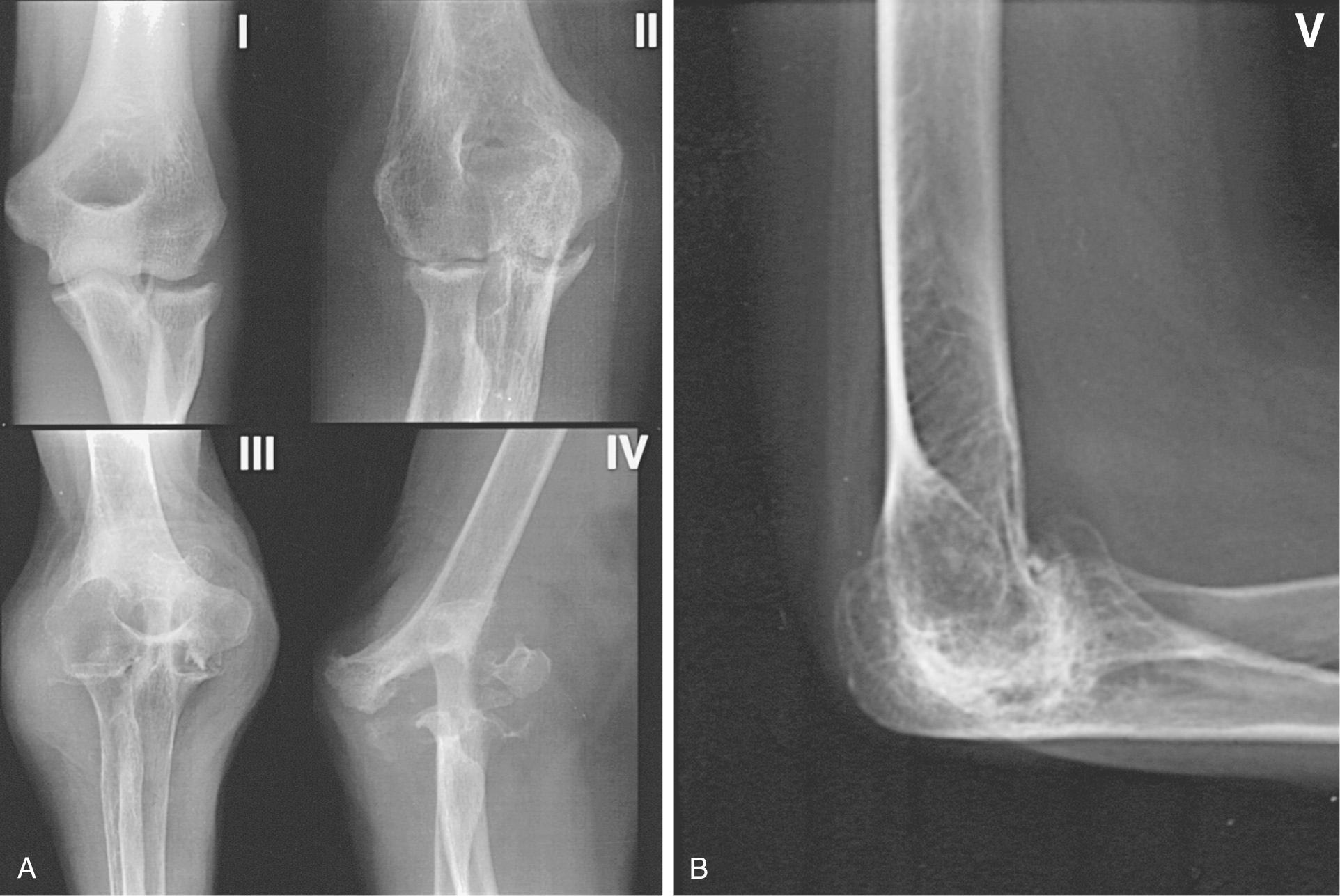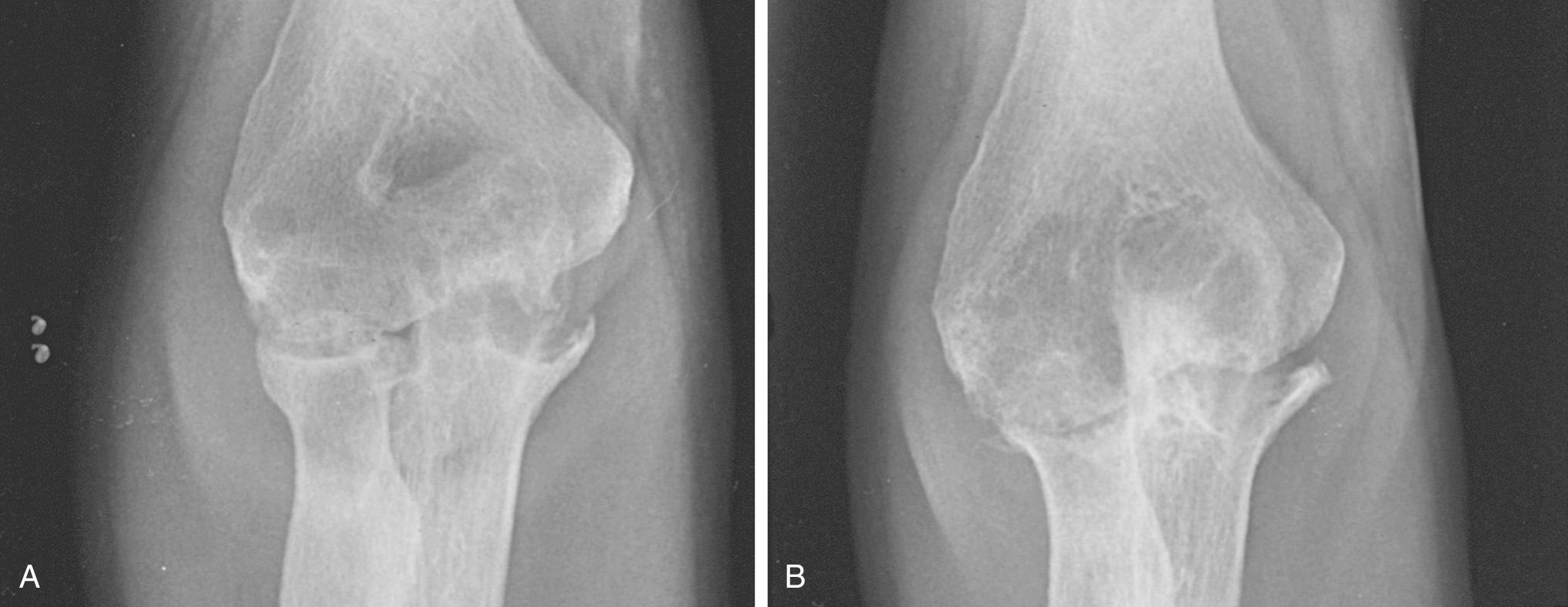Physical Address
304 North Cardinal St.
Dorchester Center, MA 02124
Rheumatoid arthritis affects 1% to 2% of the general population. Prior to the introduction of disease-modifying antirheumatic drugs (DMARDs), involvement of elbow was present in more than half of the patients with involvement of more than 10 years. Clinical management is discussed in Chapter 77 . While less commonly needed, the surgical treatment options include synovectomy, interposition arthroplasty, and total elbow replacement. In the appropriate patient, synovectomy with or without radial head excision reduces the amount of joint fluid and removes proliferative synovitis, thus decreasing pressure, pain, and swelling. After a few months, a new synovial membrane is regenerated, but the lack of villous change, vasculitis, and enzymatic activity indicates an essential difference in the inflammatory process after synovectomy.
Synovectomy is ideal for the patients who present with synovitis resulting in a painful elbow with limited function in spite of DMARD therapy. A warm, swollen elbow with a mild flexion contracture and a painful limitation of flexion and extension, in addition to pronation and supination, is characteristic. As the disease progresses, the synovitis generally wanes, and persistent pain and stiffness result from joint destruction with articular incongruity ( Fig. 110.1 ).

Mayo has described five categories of radiographic appearance: type I, synovitis with a normal appearing joint; type II, loss of joint space but maintenance of the subchondral architecture; type IIIA, alteration of the subchondral architecture; type IIIB, alteration of the architecture with deformity; type IV, gross deformity; and type V, radiographic appearance of ankylosis ( Fig. 110.2 ). This classification is helpful in providing a basis for treatment options. Elbow synovectomy is ideally reserved for the early stages of the disease (type I, type II, and early type IIIA) ( Fig. 110.3 ).


Synovectomy is not generally considered effective or reliable in restoring motion so it is not indicated for ankyloses. Therefore, a total arc of flexion of at least 80 degrees is recommended before the procedure. However, it has been shown that with anterior and posterior capsular release or capsulectomy, a better outcome may be possible even in those with less than 80 degrees of flexion.
The role of synovectomy in more advanced stages of disease is not recommended and is an indication for total elbow arthroplasty. In fact, a few reports relate worsening instability over time after synovectomy. On the other hand, evidence exists that advanced radiographic stage of the disease does not influence the ultimate outcome. a
a References .
However, today total elbow replacement is clearly the treatment of choice for advanced rheumatoid involvement.
The major contraindications to synovectomy are severe joint destruction (type IIIB or type IV) and inflammatory fibroarthrosis.
Nonsurgical (chemical or radiation synovectomy) is no longer performed and arthroscopy has replaced open procedures.
Chemical and radiation synovectomy has been advocated as a noninvasive procedure, especially in patients who are unable to undergo surgery. Rhenium-186, yttrium-90, and osmic acid have been used with caution at the elbow due to the potential for cartilage necrosis and the subcutaneous location of this joint. These options are rarely, if ever employed today.
Become a Clinical Tree membership for Full access and enjoy Unlimited articles
If you are a member. Log in here